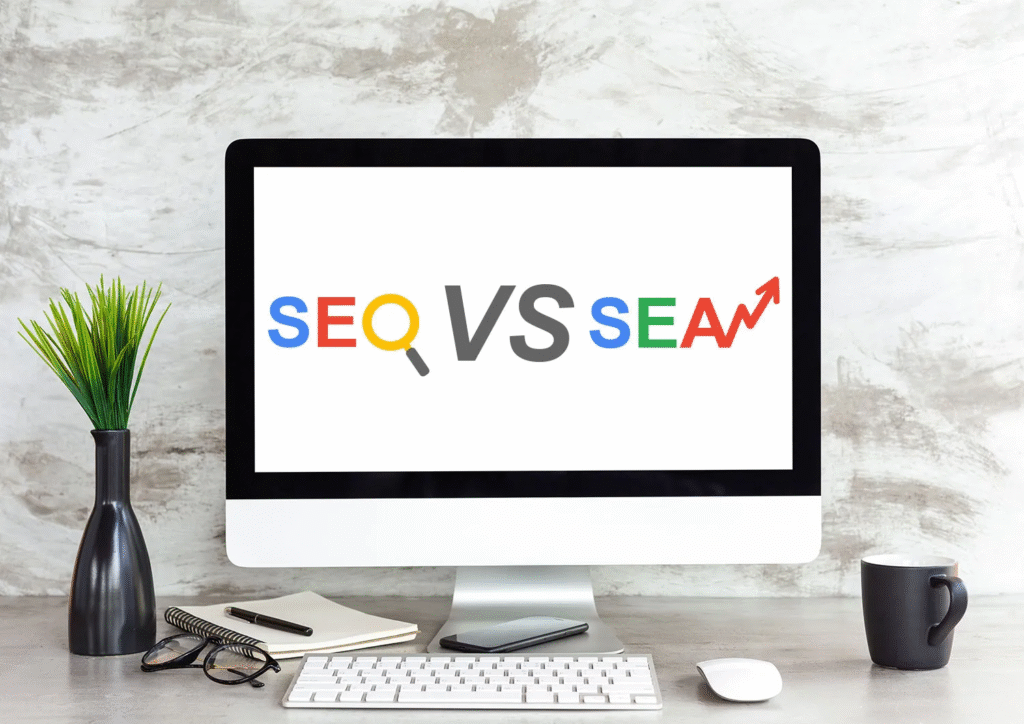Search Engine Advertising (SEA) has become a pivotal component for e-commerce businesses aiming to accelerate their growth and stand out in a crowded digital landscape. Unlike organic search, SEA allows merchants to target specific audiences with precision, ensuring their products and services are seen by potential customers at the exact moment they are searching for related items. The power of paid search lies in its ability to generate immediate visibility, drive traffic, and boost sales, making it an essential strategy in the competitive world of online retail. For e-commerce brands, effective SEA campaigns can translate into a substantial return on ad spend (ROAS) when executed thoughtfully, helping to maximize revenue while controlling marketing costs.
Understanding Your Audience and Crafting Targeted Campaigns
To truly maximize ROAS through SEA, understanding your audience is fundamental. Knowing who your potential customers are—the their preferences, purchasing behaviors, and search habits—enables you to design highly targeted campaigns that resonate. This involves conducting thorough keyword research to identify high-intent search terms that your audience uses when seeking products similar to what you offer. By segmenting your campaigns based on demographics, location, or buying patterns, you can tailor your ad messaging and offers to meet specific needs, increasing the likelihood of conversions. The key is to align your ad content with what your target audience truly values, ensuring your ads aren’t just seen but also acted upon.

Precision in Keyword Selection and Bid Optimization
One of the most critical aspects of SEA is selecting the right keywords and managing bids efficiently. In e-commerce, product-specific keywords—such as brand names, item categories, or features—often perform best because they align directly with what consumers are searching for. Long-tail keywords can also be highly effective, as they tend to attract more qualified traffic with less competition. Bid management is an ongoing process; optimizing bids based on performance data ensures your ads are competitive without overspending. Using automated bidding strategies available on platforms like Google Ads, such as target ROAS or maximized conversions, can help maintain a balance between ad visibility and profitability. Regularly refining keyword lists and bid settings is vital for sustaining high ROAS, especially during seasonal fluctuations or market changes.
Creating Compelling Ads that Convert
An often overlooked aspect of maximizing ROAS is the quality of the ad creatives themselves. your ads must be engaging, relevant, and aligned with what potential customers are looking for. Clear, compelling headlines paired with concise descriptions and strong calls-to-action (CTAs) can significantly boost click-through and conversion rates. Including product images, price points, and limited-time offers can further entice users to click and make a purchase. It’s also crucial to test different ad formats, such as responsive search ads or shopping ads, to see which performs best for your audience. Well-designed ads that speak directly to user intent will always outperform generic, broad messaging, making them a vital part of your strategy to maximize ROAS.
Enhancing Landing Pages for Better Conversions
Driving traffic is only part of the equation; ensuring your landing pages are optimized is equally important for maximizing ROAS. Once a user clicks on your ad, the landing page should deliver a seamless experience that guides them toward making a purchase. This means having fast-loading, mobile-friendly pages with clear product information, persuasive visuals, and easy-to-navigate layouts. Clear pricing, reviews, trust badges, and straightforward checkout processes reduce friction and encourage conversions. A/B testing different landing page elements—such as headlines, images, or CTA placements—can reveal what works best for your audience. Effectively converting ad clicks into sales boosts your ROAS by making sure every visit results in revenue.
Utilizing Advanced Remarketing and Audience Segmentation
Remarketing remains one of the most effective tools to maximize ROAS in e-commerce SEA campaigns. By targeting users who have previously visited your website but did not convert, you can serve personalized ads that remind and entice them to return. Segmenting your audience based on their behaviors—such as viewed products, cart abandoners, or previous buyers—allows you to deliver highly relevant offers. For example, highlighting discounts on items viewed or offering free shipping can nudge hesitant visitors toward completing their purchase. Leveraging dynamic remarketing, which displays ads featuring specific products users have shown interest in, further enhances the effectiveness of these campaigns. Compelling remarketing efforts can significantly improve your conversion rate and, consequently, your overall ROAS.
Monitoring Results and Continuous Optimization
No successful SEA strategy is complete without continuous analysis and adaptation. Regularly monitoring key performance metrics like click-through rate, conversion rate, cost per acquisition, and ROAS provides insights into what’s working and what needs adjustment. Using platform analytics and third-party tools, you can pinpoint underperforming keywords or ads and tweak bids, messaging, or targeting criteria accordingly. Seasonal trends or shifts in customer behavior require ongoing campaign optimization, ensuring your ads remain relevant and efficient. The process of testing new ad copy, adjusting bids, refining audience segments, and improving landing pages should be iterative, fostering a cycle of continual improvement that maximizes ROAS over the long term.
In the evolving landscape of e-commerce, mastering SEA is crucial for driving revenue and maintaining a competitive edge. By understanding your audience, expertly selecting keywords, creating compelling ads, optimizing landing pages, leveraging remarketing, and maintaining diligent performance tracking, you can significantly enhance the return on your advertising investment. A strategic, data-driven approach to SEA empowers e-commerce brands to turn ad spend into measurable growth, ensuring every dollar spent contributes meaningfully to their bottom line.
